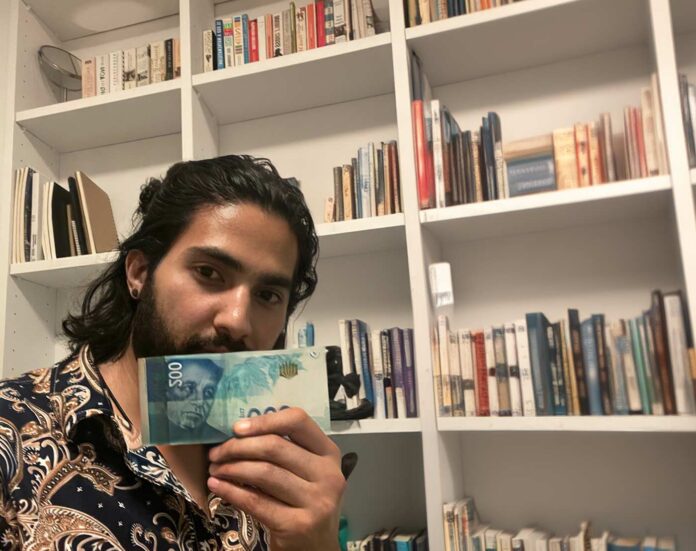In a world where countries often honor political leaders, military heroes, and monarchs on their currency, Israel stands out by celebrating its literary giants. The Israeli shekel, adorned with the faces of famous poets, writers, and cultural figures, reflects a deep respect for the arts and a unique cultural identity that values intellect and creativity over political power. This article explores the significance of this choice, highlighting the literary figures featured on Israeli banknotes and what it reveals about the country’s values and identity.
The Cultural Currency: Honoring Literary Figures
A Nation’s Tribute to the Arts
Israel’s decision to feature poets and writers on its currency is a profound statement about the country’s values. It underscores a national reverence for cultural and intellectual achievements, and a recognition that literature and art play a crucial role in shaping national identity and heritage. This approach contrasts with many other nations where currency often celebrates political and military figures, emphasizing power and conquest.
The Faces on the Shekel: A Closer Look
Leah Goldberg (100 Shekel Note)
Leah Goldberg, one of Israel’s most beloved poets, graces the 100 shekel note. Born in 1911 in Königsberg, East Prussia (now Kaliningrad, Russia), Goldberg immigrated to Palestine in 1935. Her poetry, characterized by its lyrical beauty and emotional depth, explores themes of love, nature, and Jewish identity. She was also a prolific translator, bringing world literature to Hebrew readers. Featuring Goldberg on the currency highlights Israel’s appreciation for her contributions to Hebrew literature and her role in cultural education.
Shaul Tchernichovsky (50 Shekel Note)
Shaul Tchernichovsky, depicted on the 50 shekel note, is celebrated as one of the great Hebrew poets of the early 20th century. Born in 1875 in the Russian Empire, Tchernichovsky was a physician by profession but his passion lay in poetry. His works are infused with themes of nature, love, and the Jewish national revival. He also translated Homer’s “Iliad” and “Odyssey” into Hebrew, enriching Hebrew literature with classical influences. His presence on the shekel signifies the blending of cultural heritage and modern national identity.
Rachel Bluwstein (20 Shekel Note)
Known simply as Rachel the Poetess, Rachel Bluwstein is an iconic figure in Israeli literature. Born in Russia in 1890, she immigrated to Palestine in 1909. Her poetry, marked by its simplicity and emotional resonance, often reflects her personal struggles and deep connection to the Land of Israel. Rachel’s poems are widely taught in Israeli schools, and her legacy as a pioneer of modern Hebrew poetry is celebrated through her depiction on the 20 shekel note.
Natan Alterman (200 Shekel Note)
Natan Alterman, a towering figure in Israeli poetry, appears on the 200 shekel note. Born in Poland in 1910, Alterman moved to Palestine in 1925. He was a prolific poet, playwright, and columnist, known for his vibrant language and powerful imagery. His works, which often address social and political issues, have left a lasting impact on Israeli culture. Alterman’s inclusion on the shekel underscores the importance of literature in shaping public discourse and cultural identity.
Cultural Significance and National Identity
Literature as a Pillar of National Identity
Israel’s choice to feature literary figures on its currency is a reflection of how deeply intertwined literature is with national identity. These poets and writers have not only contributed to Hebrew literature but have also played pivotal roles in the cultural and ideological formation of the modern State of Israel. Their works often explore themes of exile, return, and the struggle for national identity, resonating with the collective experiences of the Jewish people.
Educational and Inspirational Value
By honoring literary figures on currency, Israel promotes education and cultural awareness. These banknotes are not just legal tender but also serve as daily reminders of the country’s rich literary heritage. They inspire citizens to appreciate the arts and recognize the contributions of poets and writers to society’s moral and intellectual fabric.
A Counterpoint to Political Power
In a region often marked by political tension and conflict, Israel’s celebration of literary figures on its currency offers a counter-narrative to the glorification of political power. It suggests that cultural achievements and intellectual contributions are equally, if not more, valuable. This approach fosters a sense of pride in cultural and intellectual accomplishments, promoting a more balanced view of what constitutes national greatness.
Israel’s practice of featuring famous poets and writers on its banknotes is a testament to the nation’s deep respect for cultural and intellectual contributions. This unique choice reflects a national identity that values literature and the arts as foundational elements of society. By honoring literary giants like Leah Goldberg, Shaul Tchernichovsky, Rachel Bluwstein, and Natan Alterman, Israel not only celebrates its rich cultural heritage but also inspires future generations to appreciate and pursue the arts. In a world where political figures often dominate symbols of national pride, Israel’s approach offers a refreshing perspective on the power of literature and culture to shape a nation’s identity.














